If your cactus is turning purple, it could be due to one of six potential causes. These causes range from too much sun exposure to nutrient deficiencies. However, there are solutions for each problem so that your cactus can return to its normal color.
Is A Purple Cactus A Cause for Concern?
If you notice your cactus is turning purple, it could be due to a number of different causes. While some causes are nothing to worry about, others could be indicative of a more serious problem.
One common reason for a purple cactus is simply due to the plant’s natural coloration. Some cactus species are naturally purple, so if your plant was purchased from a nursery or store, it’s likely that this is the case.
However, if your cactus was healthy and green when you bought it, and it’s now turning purple, this could be due to a lack of sunlight. Cacti need bright, direct sunlight to thrive, so if yours isn’t getting enough, it could start to turn purple.
If you suspect this is the case, move your cactus to a sunny spot and see if the purple coloration fades. If it doesn’t, there could be another problem at play.

For example, if your cactus is turning purple and its leaves are drooping, this could be a sign of overwatering. Cacti are very drought-tolerant plants and don’t need a lot of water to survive. If you’re watering your cactus too frequently, the roots can start to rot, which can cause the plant to turn purple.
If you think overwatering is the problem, stop watering your cactus for a few weeks and see if the purple coloration goes away. If it does, you can resume watering, but be sure to do so sparingly.
If your plant isn’t getting enough nitrogen, phosphorus, or potassium, it could start to turn purple. In some cases, a purple cactus can be caused by a nutrient deficiency.
If it doesn’t, there could be another issue at play. If you think a nutrient deficiency might be the problem, fertilize your cactus with a balanced fertilizer and see if the purple coloration fades.
If your cactus is turning purple and you can’t figure out why, it’s best to consult with a professional. A qualified nursery or gardening center can help you diagnose the problem and find a solution.
Could It Be Fruit?
If your cactus is turning purple, it could be due to a lack of sunlight, too much water, or a nutrient deficiency.
If your cactus is not getting enough sunlight, it will start to produce less chlorophyll, which gives plants their green color. Without chlorophyll, the purple pigments in the cactus will start to show through.
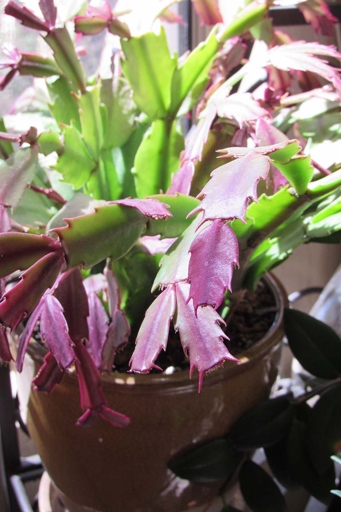
If you think your cactus is getting too much water, check the soil to see if it is soggy or moist. If it is, try letting the soil dry out for a few days before watering again.
Finally, if your cactus is lacking nutrients, it may start to turn purple. Try fertilizing your cactus with a cactus-specific fertilizer to see if that helps.
Causes of Cactus Turning Purple
If your cactus is in a sunny spot, try moving it to a shadier location. If your cactus is not getting enough water, it may start to turn purple. If you think your cactus is turning purple due to one of these factors, try to correct the problem and see if the purple color goes away. Second, it could be a sign of stress. If your cactus is infected, it will need to be treated with a fungicide or bactericide. Finally, it could be due to temperature stress. If your cactus is exposed to extreme temperatures, it may start to turn purple. If your cactus is turning purple, it could be due to a number of different factors. First, it could be a reaction to too much sunlight. fourth, it could be due to a fungal or bacterial infection. If your cactus is not getting enough nutrients, it may start to turn purple. Third, your cactus could be turning purple because of a nutrient deficiency. Make sure you are watering your cactus regularly and giving it enough moisture.
Too Much Sunlight
However, when they are grown in other areas, they can become sunburned if they are not acclimated gradually. If your cactus is turning purple, it could be due to too much sunlight. Cacti are native to desert regions and are used to high levels of sunlight. If it does not, then it is likely that your cactus has a sunburn and will need to be treated accordingly. If your cactus is turning purple, try moving it to a spot with less sunlight and see if the problem improves.
How to Treat Sun Scorched Cactus
If your cactus is turning purple, it’s likely due to sun scorching. While it’s not harmful to the plant, it can be unsightly. There are a few things you can do to treat sun scorched cactus. Sun scorching is when the sun’s rays are too intense for the plant and cause the leaves to turn purple or red.
If the sun scorching is severe, you may need to move the plant indoors. First, move the plant to a shadier spot.
The extra water will help the plant recover from the sun damage. Second, water the plant more frequently.
This will help the plant get the nutrients it needs to recover from the sun damage. Third, apply a light fertilizer.
Fourth, give the plant time to recover. Sun scorching can be stressful for a plant, so it may take a few weeks for the plant to fully recover.
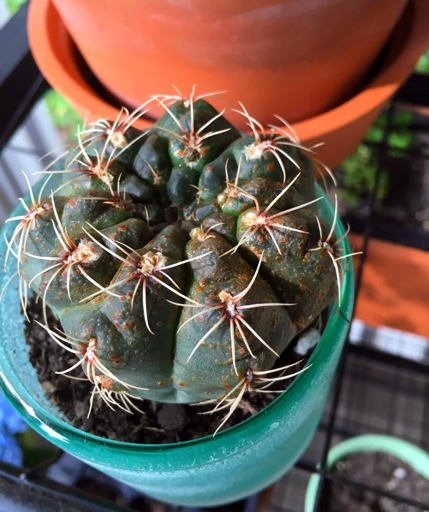
If you follow these steps, your cactus should recover from the sun damage and return to its normal color.
Temperature Issues
If your cactus is turning purple, it could be due to a number of reasons. The most common reason is temperature stress. Cacti are native to hot, dry climates and can’t tolerate cold temperatures. If your cactus is exposed to cold temperatures, it will start to turn purple.
Cacti need a lot of sunlight to grow and stay healthy. If your cactus is in a shady spot, it will start to turn purple. Another reason your cactus might be turning purple is because it’s not getting enough light.

Finally, your cactus could be turning purple because it’s overwatered. If you think your cactus is overwatered, stop watering it and see if the purple color goes away. Cacti don’t need a lot of water and too much water can actually kill them.
How to Fix Temperature Stress
If your cactus is turning purple, it’s likely due to temperature stress. Here are six causes of temperature stress and their solutions:
Too much sun: If your cactus is getting too much sun, it will start to turn purple. The solution is to move it to a shadier spot. 1.
Not enough sun: If your cactus isn’t getting enough sun, it will also start to turn purple. The solution is to move it to a sunnier spot. 2.
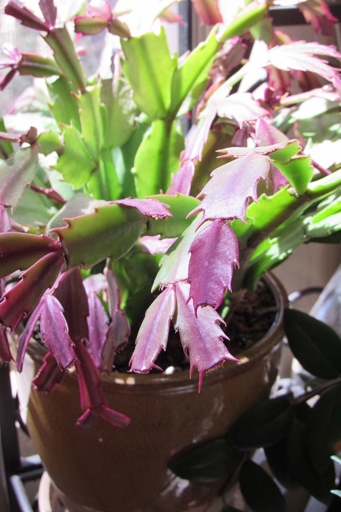
3. Nighttime temperatures that are too cold: If the temperature drops too low at night, your cactus will turn purple. The solution is to move it to a warmer spot.
Daytime temperatures that are too hot: If the temperature gets too hot during the day, your cactus will turn purple. 4. The solution is to move it to a cooler spot.
Temperature fluctuations: If the temperature fluctuates too much, your cactus will turn purple. The solution is to provide it with a consistent temperature. 5.
6. Poor drainage: If the pot doesn’t have good drainage, the roots of your cactus will rot and it will turn purple. The solution is to repot it in a pot with good drainage.
Root Rot
Root rot is a serious problem for cacti and other succulents. It is caused by a variety of fungi, bacteria, and other organisms that invade the roots and cause them to decay. This can lead to the plant dying.
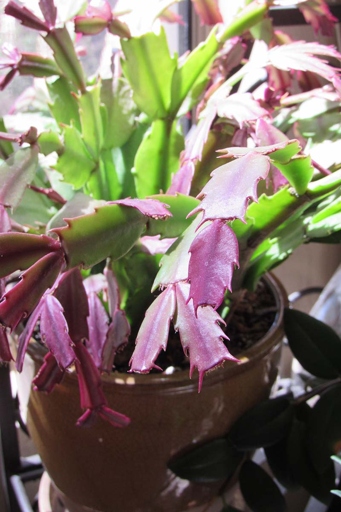
There are a few things that you can do to prevent root rot. Third, if you see any signs of root rot, such as discoloration or mushy roots, remove the affected roots and replant the cactus in fresh soil. Second, water your cactus only when the soil is dry. First, make sure that your cactus is in well-draining soil.
The sooner you treat the problem, the better the chances of saving your plant. If you think that your cactus has root rot, it is important to act quickly.
How to Fix Root Rot
This can be done by gently digging around the plant and carefully removing the roots. Overwatering can cause root rot, so be sure to water only when the soil is dry. The first step is to identify the problem. Root rot is a serious problem for cactus plants, and it can be difficult to fix. Finally, the plant should be watered carefully, using only enough water to moisten the soil. If the roots are discolored or mushy, they may be infected with root rot. Once the affected roots have been removed, the plant should be replanted in fresh, sterile soil. The next step is to remove the affected roots.
Nutritional Issues
There are a number of potential reasons why your cactus is turning purple. If you suspect a nutrient deficiency, you can try fertilizing your cactus with a cactus-specific fertilizer. If your cactus is exposed to cold temperatures, you can try moving it to a warmer location. If your cactus is under stress, you can try to reduce its stress by watering it less frequently and avoiding exposure to excessive heat or direct sunlight. It could be a sign of a nutrient deficiency, or it could be due to stress or exposure to cold temperatures.
How to Treat Nutritional Issues
These include: If your cactus is turning purple, it could be due to a number of different issues.
If your cactus is getting too much sun, it can start to turn purple. Too much sun exposure. To fix this, simply move it to a location that gets less sun. 1.
Not enough water. To fix this, water your cactus more frequently. If your cactus isn’t getting enough water, it will start to turn purple. 2.
If your cactus is lacking nutrients, it can start to turn purple. Nutrient deficiency. 3. To fix this, fertilize your cactus with a high-quality fertilizer.
4. If your cactus is infested with pests, they can suck the nutrients out of the plant, causing it to turn purple. To fix this, treat your cactus with a pesticide. Pest infestation.
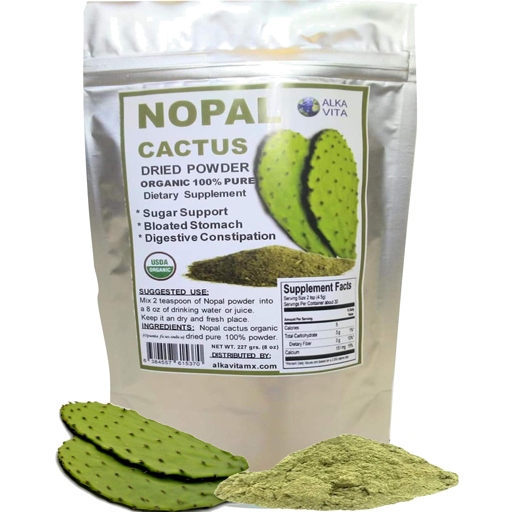
To fix this, consult with a cactus expert to determine the best course of treatment. If your cactus is infected with a disease, it can also turn purple. Disease. 5.
There are a number of different ways to fix the problem. If your cactus is turning purple, don’t panic! By following the tips above, you should be able to get your cactus back to its healthy, green self in no time.
Crowded Roots
If your cactus is turning purple, it could be due to a number of reasons. Third, it could be due to a lack of nutrients. If your cactus is turning purple, try to identify the cause and take steps to fix it. Cacti like warm weather, but if the temperature gets too hot or too cold, the leaves can turn purple. Lastly, it could be due to temperature stress. Cacti need nutrients to grow and if they don’t have enough, the leaves can turn purple. Cacti don’t need a lot of water and too much can cause the roots to rot, which can lead to purple leaves. First, it could be due to too much sun exposure. Cacti are native to desert regions and can tolerate high levels of sunlight, but too much sun can cause the leaves to turn purple. Second, it could be due to overwatering.
How to Fix Overcrowded Roots
This can happen when the pot is too small for the plant, or when the plant has been left in the same pot for too long. If your cactus is turning purple, it’s likely due to overcrowded roots.
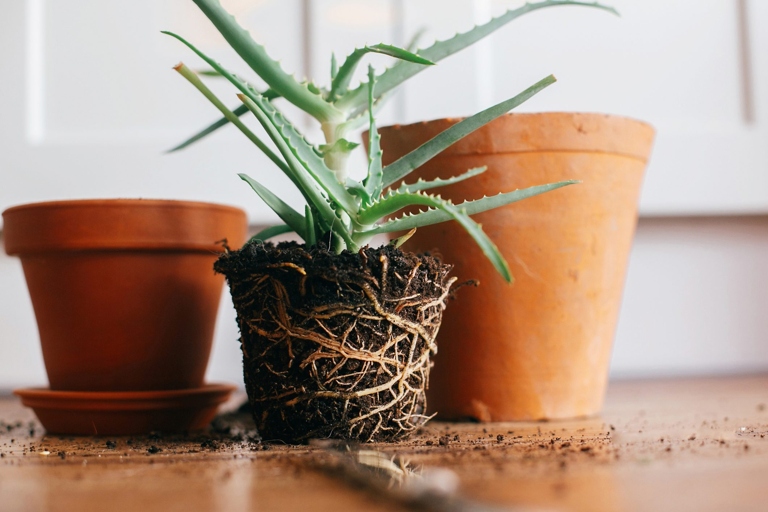
Once the cactus is repotted, it should start to green up within a few weeks. Be sure to use a well-draining potting mix, and water the cactus deeply but infrequently. To fix overcrowded roots, you’ll need to repot your cactus into a larger pot.
Cactus Cyst
If your cactus is turning purple, it could be due to a number of reasons. It could be due to too much sun, not enough water, or a nutrient deficiency.
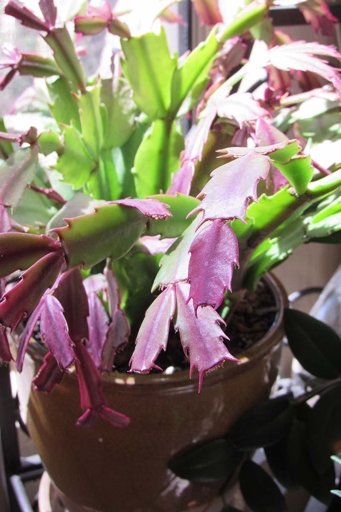
If it’s not getting enough water, water it more frequently. And if it’s lacking nutrients, fertilize it with a cactus-specific fertilizer. If your cactus is turning purple from too much sun, the solution is to move it to a shadier spot.
How to Treat Cactus Cyst
Here are six possible causes and solutions for a purple cactus: If you notice your cactus turning purple, it could be due to a number of reasons.
If your cactus is getting too much sun, it will start to turn purple. Too much sun exposure. The solution is to move it to a shadier spot. 1.
Not enough sun exposure. The solution is to move it to a sunnier spot. If your cactus isn’t getting enough sun, it will also start to turn purple. 2.
If the temperature is too hot or too cold, your cactus may turn purple. 3. The solution is to move it to a spot where the temperature is more moderate. Temperature stress.

Nutrient deficiency. The solution is to fertilize it with a cactus-specific fertilizer. 4. If your cactus isn’t getting enough nutrients, it may turn purple.
If your cactus is infested with pests, it may turn purple. The solution is to treat the infestation with an appropriate pesticide. 5. Pest infestation.
If your cactus has a disease, it may turn purple. The solution is to treat the disease with the appropriate fungicide or bactericide. 6. Disease.
Frequently Asked Questions
1. Why is my cactus turning purple?
There are a few reasons why your cactus might be turning purple. It could be due to stress, lack of nutrients, or too much sun exposure.
2. What can I do to fix it?
If your cactus is turning purple due to stress, try moving it to a different location. If it’s due to lack of nutrients, fertilize your plant. If it’s getting too much sun, move it to a shadier spot.
3. Why is my cactus turning purple and wilting?
This is usually a sign of overwatering. Make sure you’re only watering your cactus when the soil is dry to the touch.
4. What are some other signs of overwatering?
In addition to the leaves turning purple, other signs of overwatering include wilting, yellowing, and softening of the leaves.
5. Can I save my cactus if it’s already turning purple?
If you catch the problem early enough, you might be able to save your cactus. Try one of the solutions above and see if the purple leaves start to turn green again.
6. My cactus is turning purple and the leaves are falling off. Is it dead?
It’s possible that your cactus is beyond saving. If the leaves are falling off and it’s not showing any signs of new growth, it might be time to start over with a new plant.
Final thoughts
If your cactus is turning purple, it could be due to a number of reasons. It could be because of too much sun, not enough water, or a nutrient deficiency. There are a few things you can do to fix the problem, such as moving your cactus to a shadier spot, giving it more water, or fertilizing it.
